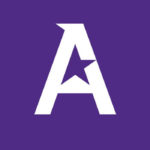Create a culture that means business™
Email address
When your employees want to learn more about the performance review process, their benefits, what career progression looks like, or upcoming company-wide initiatives, they turn to human resources. Handling all these incoming requests can be tricky, even for companies with a substantial number of HR employees on staff. But it’s on HR to regularly ask employees for feedback, highlight employee success stories, and build a culture employees actually feel connected to.
Below, we’ll cover why HR communication matters and outline seven ways to perfect your HR communication strategy.
The key role HR communication plays in organizational success
There are many concrete ways HR communication contributes to business success. Here are just a few:
- Better understanding of roles and responsibilities – Employees perform their best when they know what’s expected of them. HR communication ensures that team members understand the terms and conditions of their employment and know what to do to get promoted. Having a clear path to success paved with challenging, interesting work drives commitment and loyalty.
- Improved employee morale and engagement – HR communication isn’t a one-way street. In fact, one of the hallmarks of an outstanding HR communication strategy is soliciting feedback from employees. Giving employees a voice, listening to their concerns, answering their questions, and acting on feedback lets team members know you care and boosts engagement. Your HR team should concentrate on developing this rapport with employees throughout their lifecycle at the company. This means finding creative, compelling ways to engage them during recruiting, onboarding, and beyond.
- Fewer conflicts – Making sure everyone’s playing by the same rules helps lessen the chances for misunderstandings. Maintaining consistent messaging and establishing a welcoming culture can reduce the chance for grievances and even lawsuits. If problems arise, take the time to listen to employees and request input from all constituencies to figure out next steps.
- A boost to the bottom line – Standardizing HR processes increases efficiency, lowers costs, and breaks down silos. When launching your HR communication strategy, identify priority areas for alignment across the business and measure the impact of your strategy in the coming months or quarters.
7 strategies for improving HR communication
Keeping everyone at your organization on the same page is a tall order. But it can be done, and the rewards are significant. Here are 7 strategies for building great HR communication processes that accomplish just that.
1. Work to get buy-in from leadership
Your best ideas won’t go anywhere without the input and support of leadership. Executives set an example for all employees, and other team members respect and emulate them. Getting leadership on board is key to formalizing your communication strategy and ensuring participation.
Start by focusing on numbers 一 what the C-suite really cares about. It’s not just about how much amping up your HR communication processes will cost, it’s about the return on investment leadership should expect to see. Frame your proposal in those terms so that they can better quantify potential outcomes.
Take the time to read reports and case studies to find out how to estimate future ROI and measure your ongoing successes. You should also try instituting a pilot and then collecting employee feedback. Present this to leadership as just the beginning of what you’ll be able to achieve with a full blown program, and explain that this is something employees want and are eager to participate in. When you have the data to back you up, leadership will support your plan to improve HR communication over the long haul.
2. Align your communication strategy with your organization’s goals
Just like on a crew team, all team members at your organization need to row in the same direction. Aligning HR communication with your business objectives ties everything together in employees’ minds. If your company is trying to reach a certain goal, HR activities and communication should follow suit.
Matching HR communication with your organization’s priorities starts by focusing on your company’s core values. Over 75% of employees consider it “very important” to work for a company with defined core values. Every HR-related email, all-hands announcement, survey, and Slack message should reflect your company’s mission and vision. And HR can double down on this strategy by recognizing employees who live by your company’s values. Doing so reinforces positive behaviors and further intertwines employee values and goals with your company’s.
Connecting Communications and HR to Inform, Inspire and Engage
3. Obtain and act on employee feedback
HR should be prescriptive about how to manage effectively, how to measure performance, and how to onboard employees. But team members’ opinions should shape these efforts as well. After all, employees are the ones who have to follow these tenets in their everyday work lives. Most companies feel like they’re doing a good job of listening to their employees by sending an annual engagement survey.
While that’s a start, that certainly shouldn’t be your end goal. HR teams need to frequently solicit and then help managers act on employee feedback. Responding tangibly to employee feedback is one of the most vital drivers of engagement 一 a whopping 90% of workers are more likely to stay at an employer that collects and takes action on feedback. But emailing employees every day asking for their thoughts is not the answer. Instead, adopt tools like pulse surveys and intelligent HR chatbots 一 preferably as part of a comprehensive employee engagement solution that enables quick action on survey results 一 to set your company apart.
Pulse surveys — focused, relatively brief, anonymous questionnaires — give you a sense of how team members feel regarding a specific decision or subject. Sending pulse surveys month-to-month or on another recurring schedule shows how people are responding to key initiatives over time. If you’re not seeing the results you expect, you can adjust quickly, before issues have a significant impact on your organization.
Intelligent, always-on feedback channels like AI-powered HR chatbots proactively ask employees questions about their work-life balance, relationship with their manager, and workload. Unlike HR employees, chatbots are available to answer common questions and listen to employees 24 hours a day. They also learn from what employees tell them, analyzing feedback and serving up recommendations or surfacing team-related issues to managers.
4. Connect employees to enable teamwork
Teamwork makes the dream work. But collaboration requires genuine connections between your employees. They need to feel like their coworkers are accountable and dependable, and that they’ll take the time to listen without making snap judgments. Employees should be comfortable asking for help when they need it, want to show up for others in need, and recognize their peers’ accomplishments.
Consider adding some of these characteristics to your core values and recognize examples of high-performing employees and managers epitomizing this in their everyday work. And make a point to recognize employees during Employee Appreciation Day, International Women’s Day, and Bosses Day. You can even make recognition a part of each employee’s daily work experience by creating a recognition program built around mobile-friendly, easy-to-use recognition software.
HR can also support teamwork through mentor or coaching programs. These can help new employees get acquainted with your company and meet new people, or help employees wanting to move up the ladder or switch into new roles someone to look to for guidance.
Finally, HR should create opportunities to showcase the good things that are happening in each department, like all hands meetings or virtual office hours. Not only does this break down silos, it also helps people do their jobs better, makes them feel like they are in the loop, and encourages cross-collaboration. These tactics are especially useful for engaging remote employees, as many people working from home experience loneliness and disengagement.
5. Publicize and support key initiatives
How will anyone know about the awesome things HR and employees are doing if you don’t publicize them? To gain everyone’s support, you need to advertise key HR initiatives like employee resource groups, employee engagement activities, and perhaps most importantly, your recognition program. People want to know they are being advocated for and championed in their organization, and HR needs to take the lead in showcasing these efforts. Look for a recognition platform that includes tools like a company-wide newsfeed to make highlighting initiatives and employees easy.
6. Train employees and leadership on best practices
Training staff and leadership on how to communicate should be a major HR priority. Teach your managers how to get the most out of each conversation with employees, rather than hurrying to get them over with. Employees want to hear from their bosses and anticipate detailed feedback. Vague, flippant responses show a lack of respect and are difficult to interpret and act upon.
HR should urge managers and leaders to listen to their direct reports. Executives aren’t on the ground and don’t have context for issues that arise. Instead of jumping in to try to resolve something, leaders should wait until they have a full grasp on the situation and understand the root cause of the problem at hand.
Leaders also must remember to be transparent. This is easier said than done, especially if a company is in dire straits. But if the pandemic taught us anything, it’s that people appreciate openness. Employees can see right through disingenuous communication, which builds resentment and distrust. Instead, share key information with your team and demonstrate accountability.
7. Prioritize communication during the onboarding process
When you’re starting a new job, it’s easy to feel like a fish out of water. You don’t know anyone, you’re not sure what your responsibilities are, and it’s not always clear where to find information. The onboarding process is where HR communication can really shine. Excellent HR communication makes a great impression on new employees and sets them off on the right foot.
Beyond covering job duties, explain cultural norms, talk about the typical feedback cycle, and introduce employees to other team members in employee resource groups. Sign newcomers up for any coaching or buddy systems you might have in place as well. Every few days, check in with employees to see how they’re doing 一 particularly if they’re onboarding remotely.
Ensure managers are invested in the onboarding process as well. Encourage them to schedule frequent, recurring one-on-ones with new direct reports, and have them assign new hires a project to complete in the first few weeks. This gives the employee something to work towards and makes them feel like a valued member of the team.
Lastly, don’t forget about onboarding employees who aren’t quite new hires. Contractors who’ve graduated to full-time staff positions, new parents returning from maternity or paternity leave, team members coming back from medical leave, and boomerang employees can feel neglected and out of place. Make them feel comfortable by building onboarding processes that address their unique needs.
Enable effective HR communication with technology
To implement first-class HR communication, it needs to be a part of each stage of the employee lifecycle. But it’s tough for HR to maintain consistent lines of communication, recognize team members who are living your company culture, and hear from every employee about what could be better, all while keeping up with their other daily responsibilities.
HR platforms like Achievers Listen and Achievers Recognize can help. Achievers Listen is an end-to-end employee engagement solution, capturing employee voice at every step of a team member’s journey with your company. Unlike traditional HR surveys, Achievers Listen delivers results in real time, providing insight into how employees feel in the moment and enabling you to take immediate action.
Achievers Recognize complements Listen by shaping and sustaining your culture through a science-based recognition and reward program. By enabling frequent peer and leadership recognition together with a points-based reward system, you can drive employee engagement and build brand advocacy across your organization.
Start streamlining HR communication with Achievers today by scheduling a free demo.


